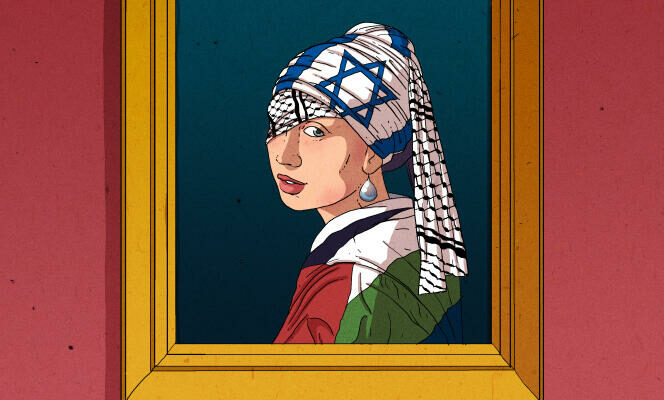Philippe Cohen, a Franco-Israeli collector, from the cerebral family, has never given up buying works that tickle his political convictions. He says he acquired a neon sign from the anti-capitalist duo Claire Fontaine, entitled Arbeit Macht Kapital. “For a Jew, buying a work that distorts “Arbeit Macht Frei” [l’inscription à l’entrée des camps nazis]it wasn’t nothing”he emphasizes.
This open-mindedness did not withstand the shock of October 7 and the carnage perpetrated by Hamas. “I accept the contradiction: artists have the right to have their opinionhe says on the phone from Tel Aviv, where he has lived for eight and a half years. I don’t need them to become pro-Israeli. Let them remain pro-Palestinian, but let them be human! »
By text, he sends us a screenshot of an Instagram story published by a renowned Palestinian visual artist, collected in particular by the MoMA in New York. On the photo of an old lady hostage of Hamas, taken in a selfie by her laughing captors, the artist wrote this comment in English: “This captured settler looks happy. I hope we feed her good Palestinian food. » “How can an artist publish such a terrible image and rejoice in the capture of a Jew? »exclaims Philippe Cohen, whose collection revolves around the question of the image and its emptiness.
The disorder of this contemporary art lover, who exhibited his works in 2013 at Passage de Retz, in Paris, is far from being an isolated case. In just a few days, the Hamas terrorist attack and the deadly offensive by the Israeli army that followed it profoundly shook the ecosystem of artists, dealers and collectors.
Two paintings by Lebanese artist Ayman Baalbaki were withdrawn by Christie’s from a sale of Middle Eastern art on November 9 in London. One, made in 2012, depicts a man with his face covered by a keffiyeh, a traditional scarf that has become the symbol of Palestinian resistance. The other, dated 2011-2018, depicts a man wearing a gas mask over a hood, his forehead surrounded by a headband on which is written in red and Arabic “We are revolting”. The two paintings had already been offered on the market several times without causing a stir.
Wave of indignation
More than the works themselves, it is the public expressions of each person that are now examined and judged. Signed by some 8,000 players in the art world, an open letter, published on October 19, by the American magazine Artforum has split this world into two camps, increasingly radicalized, leaving little margin of freedom for moderates.
You have 85% of this article left to read. The rest is reserved for subscribers.
